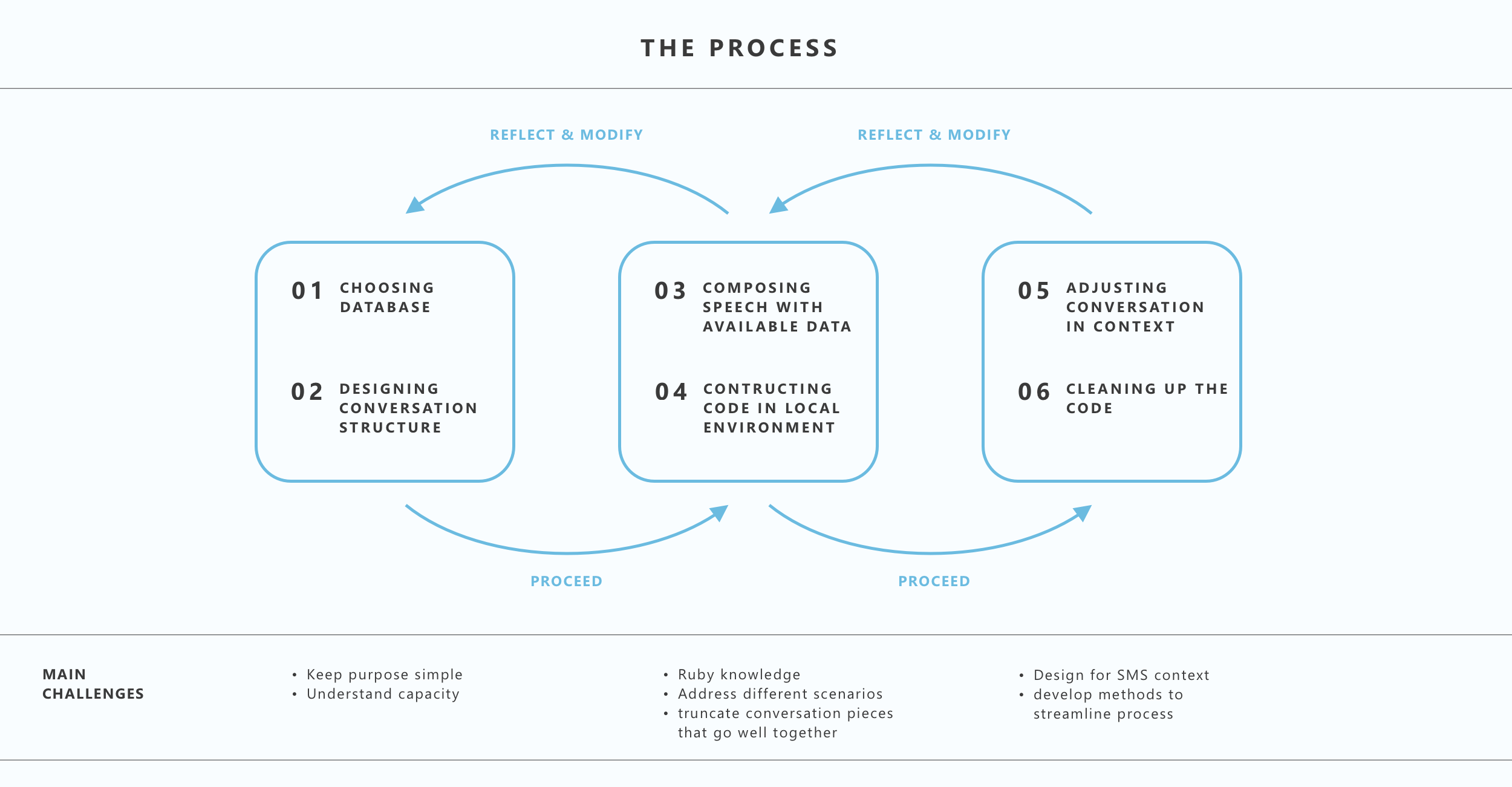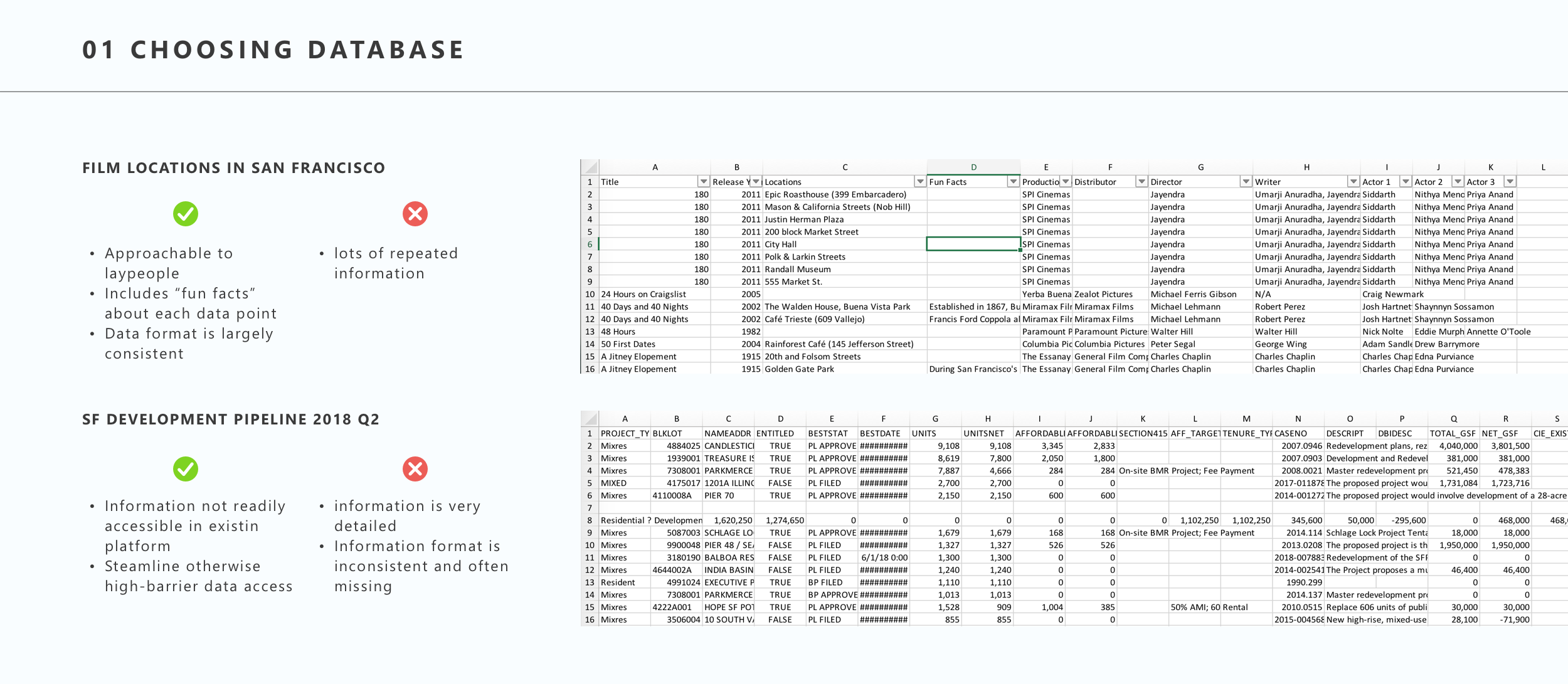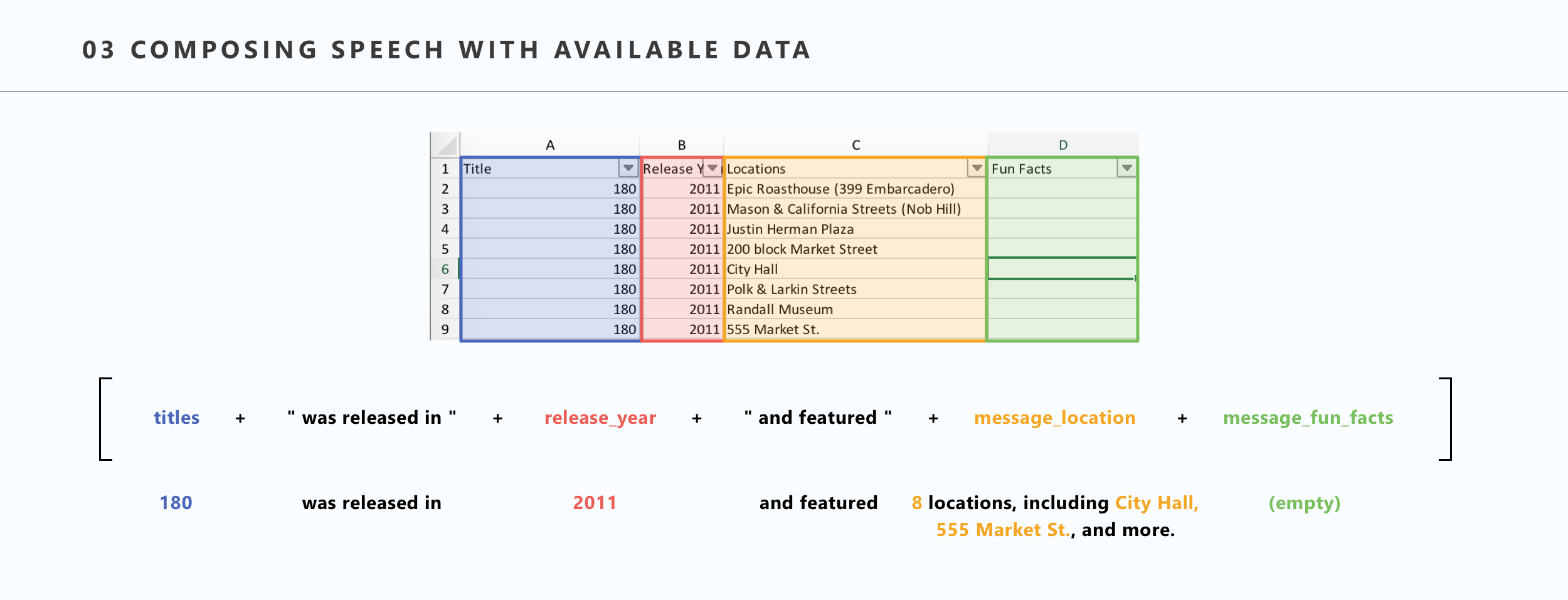Talk to the MeBot about a movie or TV show you like, and it can tell you if the film was filmed in San Francisco! Or ask the MeBot about the movies that I like :).
Outcome
The MeBot is chat bot with which you can text to learn more about me and get movie fun facts about San Francisco – all by using San Francisco's open source API.
Previously practiced as a planner, this chat bot project is a fun marriage of my interest in civic engagement and interaction design. While this MeBot take on a more casual topic of city culture. It lays the ground work for more professional uses such as looking up ongoing development projects in cities or learning about the public space maintenance.
Youtube link to video (in case it doesn't show up below: https://youtu.be/wou1skeBnhQ)
Choosing Databases
When I started this project I knew I wanted to use government data – it's what I use a lot previously as a planner for technical purposes. I looked into San Francisco's data base and found a lot of them with open API! I eventually narrowed down to two very different types of data that I really liked, weighed the pros and cons, and chose the filming location data that may attract larger audience.
Designing Conversation Structure
In choosing the database I actually sketched the conversation structure for both – it definitely helped me see how one is more challenging than the other. The final structure as shown below was very similar to the one I had when I started coding, but the coding process definitely also help clarify the routes.
Composing Speech with Available Data
The Film Location In San Francisco database (https://data.sfgov.org/Culture-and-Recreation/Film-Locations-in-San-Francisco/yitu-d5am) has a lot of information – from title, release, locations, fun facts, distributors, directors, writers, and actors (actor_1, actor_2, and actor_3). I started with wanting to cram in everything but quickly realized that it would make the speech bubble too long.
I decided to only use 4 data points for my chatbot and quickly realized that I have to make quite a few pieces of speech to accommodate different data quantity and make the bot sound natural.
Constructing Code in Local Environment
DataSF's API is powered by SODA (https://github.com/socrata/soda-ruby), which is a gem that let you access the data simply with a weblink to the JSON file. The output of the data is stored as Hashie (https://github.com/intridea/hashie), which is a growing collection of tools that extend Hashes.
I spent the longest time trying to figure out how to get data from hashie. It was especially tricky because hashie doesn't store empty value, so the location of each item can be different depending on how complete each data point is.
For instance, this is the output for the movie "A Smile Like Yours":
Eventually I figured out a way to simply add each unique value to the another array. (note: I'd add locations.uniq to delete duplicated values, but I know this dataset doesn't have any.)
Final Reflection
While we have been building the foundation for this chatbot in weekly exercises, it was REALLY CHALLENGING for me to finally getting it to work the way I wanted (with major room for improvement). Here are some of my final thoughts:
Things I was proud of:
- Learning how to use government open data
- Designing conversation pieces that together sounds natural
- Solving some of the edge scenarios
Things I could do better
- Incorporating natural language processes capability in my Chat Bot
- Allowing for more back and forth in the conversation design
That's it :) it was a fun project and I learned a lot :)
You can upload files of up to 20MB using this form.





